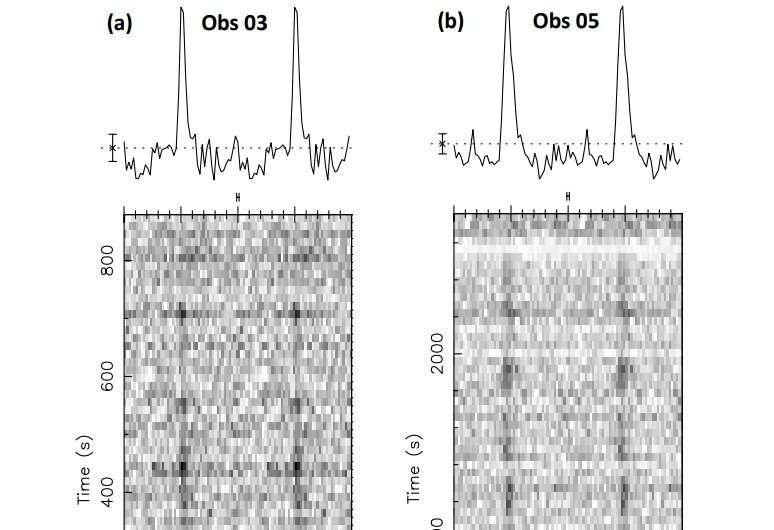June 19, 2023 report
This article has been reviewed according to Science X's editorial process and policies. Editors have highlighted the following attributes while ensuring the content's credibility:
fact-checked
preprint
trusted source
proofread
New millisecond pulsar discovered with the Green Bank Telescope

Using the Green Bank Telescope (GBT), astronomers from Columbia University and the University of California Berkeley have detected a new binary millisecond pulsar. The newly found pulsar, designated PSR J0212+5321, belongs to the "redback" subclass and is located relatively nearby. The finding was reported June 8 on the arXiv pre-print server.
The most rapidly rotating pulsars, those with rotation periods below 30 milliseconds, are known as millisecond pulsars (MSPs). Researchers assume that they are formed in binary systems when the initially more massive component turns into a neutron star that is then spun up due to accretion of matter from the secondary star.
A class of extreme binary pulsars with semi-degenerate companion stars is dubbed "spider pulsars." These objects are further categorized as "black widows" if the companion has extremely low mass (less than 0.1 solar masses), while if the secondary star is heavier they are called "redbacks."
Now, a team of astronomers led by Columbia University's Karen I. Perez reports the finding of a new redback. The pulsar was detected during a targeted GBT search of the redback optical candidate coincident with the gamma-ray source 3FGL J0212.5+5320.
"We have discovered the suspected rotation-powered MSP in the 3FGL J0212.1+5320 gamma-ray system with the Robert C. Byrd Green Bank Telescope using the L-band receiver at a center frequency of 1,501 MHz utilizing the Breakthrough Listen digital receiver," the scientists wrote in the research paper.
PSR J0212+5321, estimated to be located some 3,750 light years away, has a rotation period of about 2.11 milliseconds and dispersion measure of approximately 25.7 pc/cm3. The orbital period of the system was measured to be nearly 0.87 days.
The collected data suggest that PSR J0212+5321 experiences wide-orbit eclipses, similar to other redbacks, as well as scintillation and dispersion measure delays caused by its interaction with its companion and surroundings. The astronomers noted that PSR J0212+5321 is therefore the longest binary period eclipsing MSP known to date.
The study also found that the PSR J0212+5321 system has a mass ratio at a level of 0.247, and that it showcases a relatively high X-ray luminosity—one of the highest recorded among redbacks in the pulsar state.
The authors of the paper propose further investigation of PSR J0212+5321 in order to fully determine its properties and to better understand its behavior.
"Future observations and long-term timing of PSR J0212+5321 will allow us to measure its spin period derivative to calculate it spin-down luminosity, which is likely one of the highest among MSPs based on its high X-ray luminosity," the researchers concluded.
More information: Karen I. Perez et al, Green Bank Telescope Discovery of the Redback Binary Millisecond Pulsar PSR J0212+5321, arXiv (2023). DOI: 10.48550/arxiv.2306.04951
Journal information: arXiv
© 2023 Science X Network





















